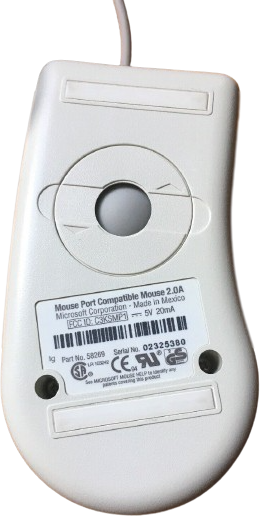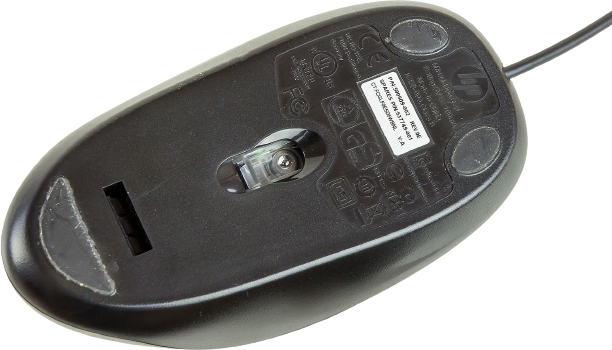The mouse is one of the most important peripheral devices for inputting commands of the modern computer. Usually the mouse is a small object equipped with one or more keys, shaped so that it can be easily grasped and manipulated by hand. Its operating principle is based on the recognition by the computer of its movement relative to the flat surface on which it is placed and moved.
The main movement translation techniques use mechanical, optical and inertial sensors:

Mechanical mice
A variant of the mouse, invented in the early 1970s by engineer Bill English of the Xerox PARC company, replaced the external wheels with a single ball that could move in any direction. The movement of the ball, in turn, was detected by two perpendicular wheels that were inside the mouse. This variant of the mouse resembled an inverted trackball, and was the main form used with personal computers in the 1980s and 1990s. The group at Xerox PARC settled on the modern technique of using both hands to type on a QWERTY keyboard, and the mouse was used only when needed.
Modern mice were born at École polytechnique fédérale de Lausanne (EPFL) under the inspiration of Professor Jean-Daniel Nicoud and the hands of engineer and watchmaker André Guignard. An outgrowth of EPFL, the company Logitech launched the first popular mouse.

Optical mice
An optical mouse uses a light-emitting diode and a photodiode to detect movement on the surface of a mousepad, without moving parts like a mechanical mouse.
Early optical mice, such as those invented by Steve Kirsch of Mouse Systems Corporation, could only be used on a special metal surface: a mousepad that had a fine grid of blue and gray lines printed on it. As computing power became cheaper, it became possible to integrate image processing ICs into the mouse. This advantage allowed mice to detect movement on a wide variety of surfaces.
Tactile mice
In 2000, Logitech introduced the "touch mouse", which contained an actuator that made the mouse vibrate. A haptic feedback ast, for example: to give feedback when the edge of a window was passed.
In the fall of 2009, Apple introduced the "Magic Mouse" model. It looks like a regular mouse but it doesn't have to be moved and has no keys or wheel, reacting to certain finger movements directly on its upper surface.
Unconventional mice
Apart from the usual mice, which are operated by hand, there are other types of mice. They help those who have a disability, those who have sustained injuries from excessive mouse use, or those who cannot use conventional designs. Some of these are:
- Trackball — the user moves a ball mounted on a fixed base
- Minimouse — a small mouse, about the size of an egg, which is optimized for portability (very often used together with laptops)
- Camera mouse — a camera tracks the movements of the user's head and moves the cursor on the screen accordingly. Another variation tracks a dot on a person's head and moves the cursor accordingly. It is more accurate than the previous
- Palm mouse — is held in the palm and is operated by only two buttons; the movements on the screen correspond to a very fine touch, and the pressure determines the movement speed
- Foot mouse — a mouse variant for those who don't want or can't use their hands or head
- Joy-mouse — a combination of a joystick and a mouse, the joy-mouse is held vertically like a joystick, but is moved like a normal mouse. Usually, a button can be pressed with the thumb
See how a ball mouse works: